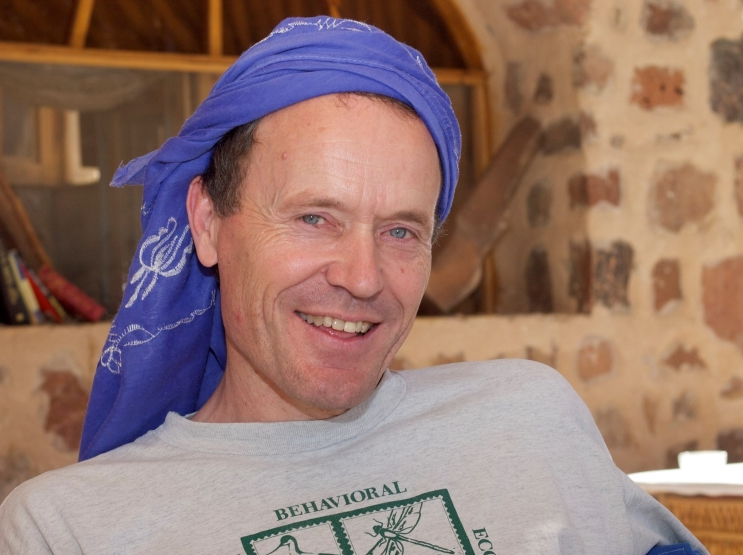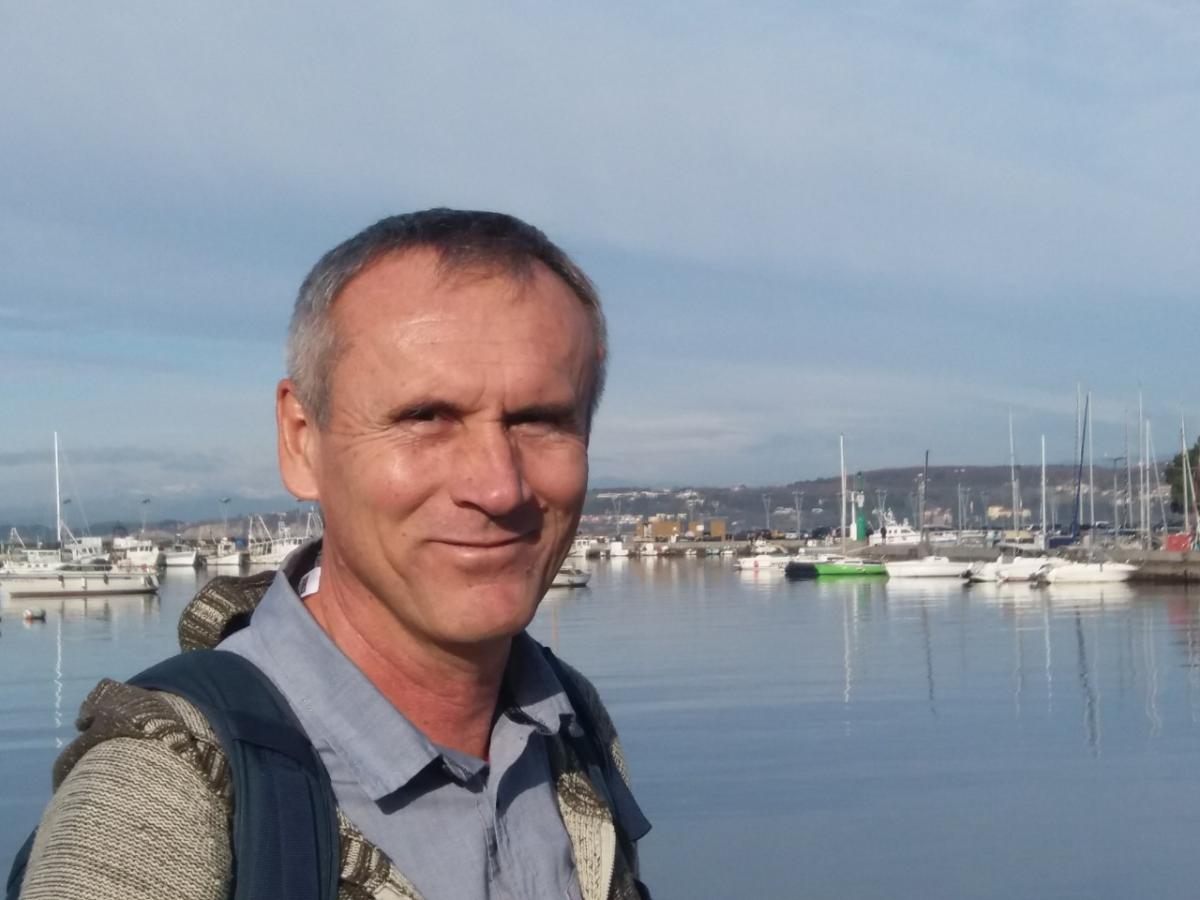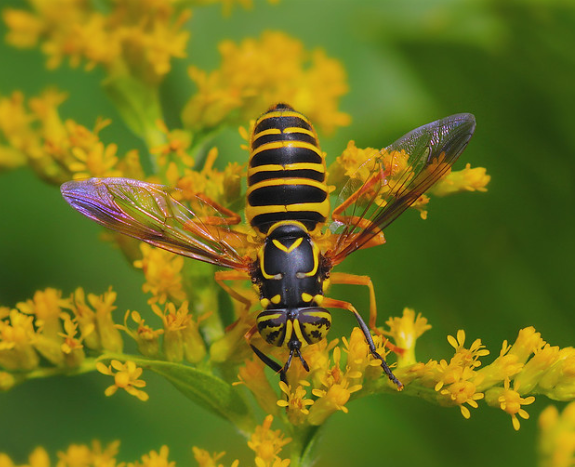Filling in the knowledge gaps around Hoverflies in Europe: Meet our Hoverfly Experts - an interview with Ante Vujić and Francis Gilbert
This is the first in a series of interviews with Hoverfly Experts involved in IUCN’s European Red List (ERL) of Hoverflies. The project aims to assess the extinction risk of hoverfly species across Europe, and will contribute to guiding decisions and conservation action for these species at the European level.
Hoverflies are a group of pollinators characterised by their time spent hovering in flight, displaying their extremely well developed acrobatic skills. These flies are most likely to be found hovering around flowers in the garden whilst they feed on nectar. They are often mistaken for being a wasp or a bee as some species mimic their vibrantly coloured black and yellow abdomens. They are used as a bio-indicator for ecosystem monitoring and their larvae act as biocontrol agents of aphids making them both a friend to gardeners and farmers.
Ante Vujić and Francis Gilbert are professors of ecology, conservation and entomology at the Universities of Novi Sad (Serbia) and Nottingham (United Kingdom) respectively. They are both chairs of the IUCN Hoverfly Specialist group and Technical Advisors of the ERL Hoverflies. Together they hold an encyclopaedia of hoverfly knowledge that we hope to uncover in this interview.
Dr. Gilbert first became interested in the Hoverflies whilst on a summer ecology field course: ‘I was so taken with them that I did a final-year project on their flower visiting, and persuaded my eventual supervisor to apply for funding for a PhD on them. I have studied them ever since. The key thing that keeps me fascinated by them is their beauty - and like many insect groups, there are thousands of species with endlessly varying patterns.’
His interest in hoverflies that appear to mimic bees and wasps led him to concentrate his research on phylogeny and the evolution of mimicry. After taking part in a 4 year research and monitoring project in the National Parks of Egypt, he returned to Nottingham and began a conservation course for undergraduates, which he still runs to this day.
Conversely, Dr. Vujić was inspired to begin hoverfly research by one of his professors during his first year at university ‘and I have studied them non-stop ever since’ he tells us. That is not hard to believe as he has since described almost 50 new species of hoverfly, has become an expert on 77 species known to be endangered in Serbia and worked to designate a prime hoverfly area within the Serbian ecological network. Like Dr. Gilbert, he now teaches conservation biology and entomology at the University of Novi Sad alongside his research.
Dr. Vujić recognized the importance of establishing a specialist group of Hoverflies in Europe in light of the recent EU Pollinators initiative. When asked about the importance of the ERL Hoverflies he responded: ‘It is very important. Especially now, as the EU has started to support the preservation of pollinators. This is the right moment to use our knowledge.’
Furthermore, Dr. Gilbert elaborated on how the IUCN Red List is important in more than just one way: ‘It will focus minds on the most important species for conservation actions - the Serbian group has already done this at national level, but of course it is important to work at a larger scale to be sure of long-term sustainable conservation. It will galvanize the community of hoverfly researchers to develop distribution maps for the whole of Europe: this will have important benefits in the future. ‘
Both experts agree that the main threats to hoverflies in Europe come from the looming issue of climate change together with the miss-management of forestry and agriculture. As Dr. Gilbert puts it ‘the way we are changing natural landscapes, chopping them up into islands of natural habitat in a sea of agriculture and the looming issue of climate change… is forcing organisms to move on to the newly fragmented landscape’ Along with providing an ecosystem service in the form of pollination and aphid regulation, hoverflies also play a role in plant waste degradation, the neutralization of pathogenic bacteria and biocontrol of invasive plants.
Although Dr. Vujić has seen an increase in conservation efforts in the past 10 years, he and Dr. Gilbert believe that few people realize the urgency of the current extinction crisis and that concrete actions must be taken to match the scale of this crisis.
As for their favorite species, Dr. Vujić has many favorites but one that he believes particularly stands out is the enigmatic species Katara connexa which was discovered by his team about 20 years ago and which was recently described to be present in the mountains of central Greece. Dr. Gilbert has a preference for the wasp and bee mimics that he has dedicated much of his research to over the years (such as Spilomyia, Temnostoma, Volucella and Criorhina): ‘the sheer thrill of seeing them in the field is wonderful.’



